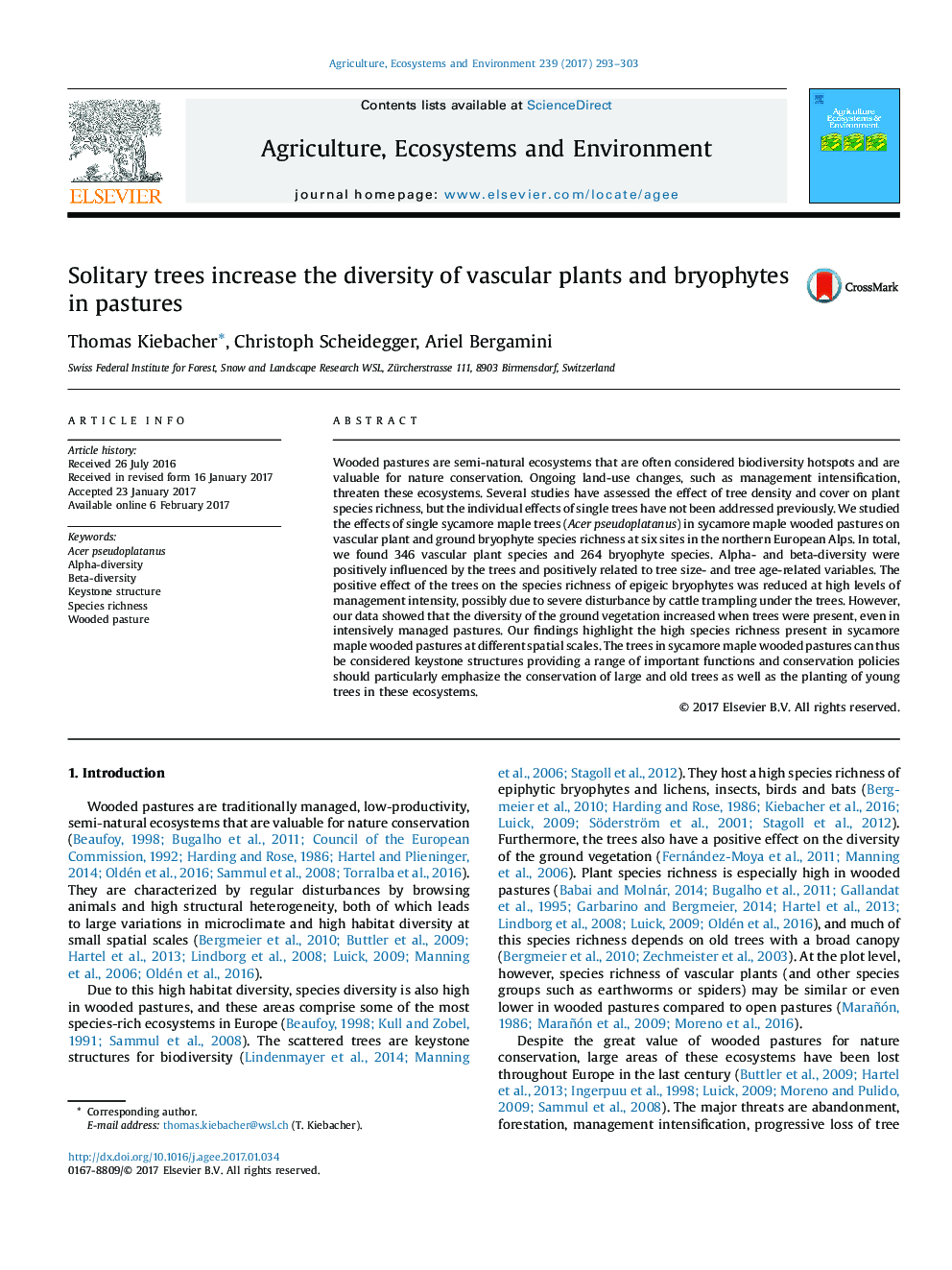| Article ID | Journal | Published Year | Pages | File Type |
|---|---|---|---|---|
| 5537936 | Agriculture, Ecosystems & Environment | 2017 | 11 Pages |
â¢We studied bryophytes and vascular plants in wooded pastures.â¢Single trees positively affected alpha and beta-diversity of the ground vegetation.â¢Tree retention is ecologically worthwhile also in intensively managed pastures.â¢Trees are keystone structures for high species richness at small special scales.
Wooded pastures are semi-natural ecosystems that are often considered biodiversity hotspots and are valuable for nature conservation. Ongoing land-use changes, such as management intensification, threaten these ecosystems. Several studies have assessed the effect of tree density and cover on plant species richness, but the individual effects of single trees have not been addressed previously. We studied the effects of single sycamore maple trees (Acer pseudoplatanus) in sycamore maple wooded pastures on vascular plant and ground bryophyte species richness at six sites in the northern European Alps. In total, we found 346 vascular plant species and 264 bryophyte species. Alpha- and beta-diversity were positively influenced by the trees and positively related to tree size- and tree age-related variables. The positive effect of the trees on the species richness of epigeic bryophytes was reduced at high levels of management intensity, possibly due to severe disturbance by cattle trampling under the trees. However, our data showed that the diversity of the ground vegetation increased when trees were present, even in intensively managed pastures. Our findings highlight the high species richness present in sycamore maple wooded pastures at different spatial scales. The trees in sycamore maple wooded pastures can thus be considered keystone structures providing a range of important functions and conservation policies should particularly emphasize the conservation of large and old trees as well as the planting of young trees in these ecosystems.
